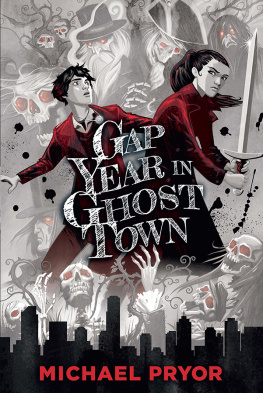Thank you for downloading this Simon & Schuster ebook.
Get a FREE ebook when you join our mailing list. Plus, get updates on new releases, deals, recommended reads, and more from Simon & Schuster. Click below to sign up and see terms and conditions.
CLICK HERE TO SIGN UP
Already a subscriber? Provide your email again so we can register this ebook and send you more of what you like to read. You will continue to receive exclusive offers in your inbox.
When Americans can no longer laugh at each other, they have to fight one another.
RALPH ELLISON
Heroes aint born, theyre cornered.
REDD FOXX
Preface
K eenen Ivory Wayans stood up, kissed his mom on the cheek, high-fived his younger brother Shawn, and hugged his dad. Smiling broadly, dressed in a sharp, black tuxedo, he paused for a split second, as if to take in the moment, just for himself.
It wouldve been hard to script a triumph any more complete than the one he was in the middle of. Hed just heard his old friend Jerry Seinfeld say it, And the winner of this years Emmy is... In Living Color . The show had been on the air barely five months. And it was on Fox, which was barely considered a television network, programming only four nights a week. Fox had hemmed and hawed for the better part of a year deciding whether to air the show. They worried it was too black, that white people wouldnt get it, that black people would be offended, that gay people would protest, that Keenens siblings werent as funny as he thought they were, or simply that nobody would watch. Keenen had resisted their attempts to bend the show to their ideas, to water it down. Hed come too far. If he was going down, he was going down swinging on his own terms.
Keenen took one step toward the stage inside the Pasadena Civic Auditorium and wrapped the shows line producer, Michael Petok, in a bear hug. Petoks fiance wiped lipstick from Keenens face and then Keenen embraced the shows other producer, Tamara Rawitt, a short, Jewish former marketing exec whod become his somewhat unlikely lieutenant. As the three of them strode down the aisle toward the dais, they were trailed by Kevin Bright, a supervising producer on the shows pilot. All four walked onstage, Keenen nodded at Seinfeld, whom hed known since the two were young standups at the Improv in New York, took the gold statue from the other presenter, Patrick Stewart, and looked out across the three thousand or so people staring back at him.
At thirty-two, Keenen was hardly a fresh, young face anymore. Hed spent years slugging it out as a standup. Hed been turned down by Saturday Night Live . Hed played forgettable roles on forgotten television shows. For years, hed watched the friends hed come up withEddie Murphy, Arsenio Hall, Robert Townsendachieve their dreams. Hed done okay too, but sometimes couldnt escape the feeling he was being left behind. Eddie was the biggest comedy star in the world. Robert and Keenen had worked together on a pretty great movie, Hollywood Shuffle , but afterward, Robert got all the shine. Arsenio debuted his hit late-night talk show more than a year before In Living Color launched. For a long time, even Keenens younger brother Damons star seemed to be eclipsing his. But this was, finally and undeniably, Keenens moment. His show was a hit. He just won an Emmy. And to make it a little sweeter, the nominees he beat out included both Saturday Night Live and his old friend and rival Arsenio.
All right, he said, looking down at the floor, clearing his throat and exhaling in a short, shallow breath. Id like to thank the people who helped make the vision become a reality. He rolled through the expected list of thank-youshis producers, his writers, Fox bigwigs like Barry Diller and Peter Chernin, his manager Eric Gold.
I could tell he was beginning to forget people, says Rawitt, recalling the moment. You could see my mouth moving behind him, like Thank this one, Thank that one. I remember before the ceremony Eric Gold frantically rushing over to me and going, Please make him thank me.
Keenen had grown up one of ten kids in the projects in Manhattan, and as he turned his speech toward his family, emotion overwhelmed him. Above all, Id like to thank my family. Those are the ones Ive been doing this for all my life. He covered his mouth, stepped back a half step from the microphone, and quietly told himself, Okay, let me chill.
Keenen had never won anything in his life. In Living Color had been nominated in two other categories that year, Outstanding Choreography and Outstanding Writing, and lost both. He figured this would be the same but was prepared in case it wasnt. Hed planned a great speech to salute his mom, whod been there to support him through all the things hed never won, through his disappointments and failures.
Composing himself, Keenen tried to continue. My mother and father are here tonight... Again, he began to choke up, and, out in the crowd, his brother Shawn wiped tears from his own eyes. Im gonna get through this, Keenen pledged before abandoning his resolve. This is for you, Ma, forget it, he said, his voice shooting up a few octaves and cracking. With that, he waved the Emmy, and walked offstage, his arm draped around Rawitts shoulders.
It was the worst acceptance speech ever, Keenen says, looking back on it twenty-five years later.
Yet the moment was an unqualified, wide-screen triumph for a show that punctuated the beginning of a new era. There had been black sketch shows before In Living Color , including the short-lived but influential Richard Pryor Show more than a decade earlier. That this was the first one that found an audience said as much about that audience as it did about the show. The culture was changing. For more than fifty years, black life on screens big and small had looked even more demeaning than it did in the real world. Stereotypes were indulged. The Civil Rights Movement came and went without too many substantive changes in front of or behind the camera. There had been important breakthroughsBill Cosby, Flip Wilson, Redd Foxx, Richard Pryorbut the march of progress was exceedingly, agonizingly slow.
Until suddenly it wasnt. Not only were there Eddie and Arsenio and Robert and Keenen, but there were Spike Lee and Oprah Winfrey and Reggie and Warrington Hudlin. Soon there would be Chris Rock and John Singleton and Martin Lawrence and the Hughes Brothers and Chris Tucker and Dave Chappelle. The week before that Emmy broadcast, a new show featuring a former rapper named Will Smith had debuted. Many of the eras other rappers would soon become multi-hyphenate stars themselves: Ice Cube, LL Cool J, Ice-T, Queen Latifah, Tupac Shakur. In Living Color a black show created by a black man that seemed to effortlessly cross over to a mainstream audience ready and waiting for itwas in many ways at the center of it all. As Keenen put it, We became this bridge in America between white suburban kids and urban kids.
Most great success stories are the sum of small failures overcome. When you zoom tightly in on that Emmy coup, cracks appear in the foundation that offer hints as to why In Living Color lasted only five seasons and why Keenen didnt even finish out the fourth: One of the original cast members had been fired a few weeks before the Emmys, nearly the entire writing staff had already turned over, and many of the Fox executives Keenen thanked in his acceptance speech had either left the company or were on their way out soon. Even one of the producers on the podium that night accepting the Emmy alongside Keenen hadnt seen him since he was dismissed after the pilot. This was the unforgiving cauldron in which In Living Color was forged. But for at least those few moments on the auditorium stage that night, things were about as perfect as they could be.
Next page







